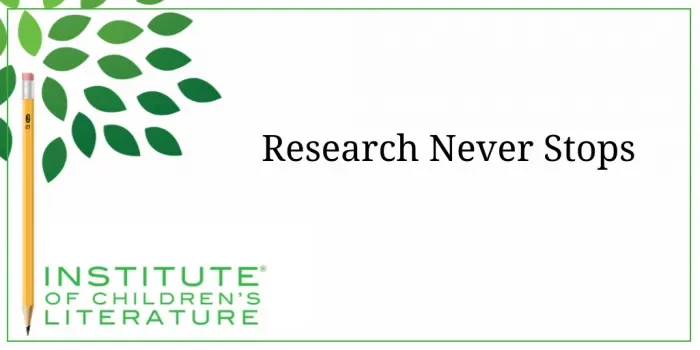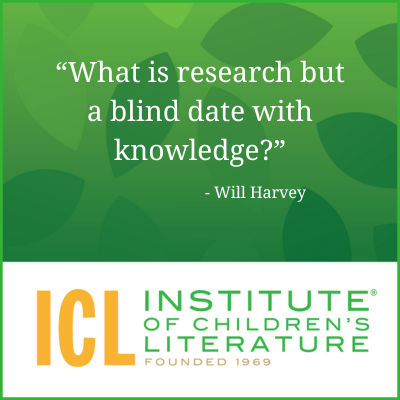1000 N. West Street #1200, Wilmington, DE 19801
© 2024 Direct Learning Systems, Inc. All rights reserved.

Most successful writers are researching all the time. We just call it reading.
Now there are two ways to read. There’s reading to pass the time and that’s a valuable type of reading. It gives us a quiet moment. It lets our busy brains consume rather than produce. It can be a wonderful way to unwind. The second type of reading is a bit less relaxing. It’s reading as exploration. This kind of reading wakes up the brain and provokes questions. And those questions can point us toward writing something new.
Any reading can jump between reading to pass the time and reading as exploration. Sometimes you’re having a quiet moment perusing a nature magazine and, bang, you suddenly shift into reading as exploration.

Questions are your signal that exploration mode has begun. Exploration reading will often lead you to something new and fresh that engages you and (eventually) your reader.
Exploration reading can actually grow out of fiction or nonfiction. I remember reading Michael Crichton novels when I was young. They often led me right into exploration mode. Could dinosaurs be cloned? Could a horrific disease come from space? Reading Michael Crichton novels spurred exploration mode, because they were written by a novelist who took research very seriously and who clearly jumped into exploration mode himself as his books ask question after question. Crichton’s own research methods were varied and most nonfiction writers can relate to them, “I visit locations, talk to experts, read technical journal articles in the field. I continue until I have what I need. Sometimes while writing I go back for more, if I find I’m missing something.”
Though well-researched fiction definitely can trigger exploration mode, so can even the most casual reading of nonfiction. This is why it’s a good idea for any writer to develop a love of nonfiction because it will prompt ideas for both nonfiction as well as fiction. It happened for me after reading a fascinating nonfiction book by Marianne Dyson called Home on the Moon. The book really worked up my explorer’s brain and made me think. From there, I eventually wrote Goldilocks III about a space colony where things go very badly. The design of Goldilocks III was inspired by the science in Dyson’s book (though the parasite-driven space zombies are not her fault).

Stephen King famously said, “If you don’t have time to read, you don’t have the time (or the tools) to write.” And that kind of reading includes pastime reading in the genre and format you intend to write (to train your brain how to write in that genre/format), reading helpful books for writers (including technique books and market guides) and reading interesting things that can tickle your imagination and launch you into explorer mode. It’s because of this that I regularly read far outside the age range and genres that I write.
Reading widely is a kind of research, because it expands the options I have as a writer. It makes me aware of things I wouldn’t know from my daily life. And it shifts my imagination into high gear. This is the kind of research you should always be doing, because the rewards from it are life-changing.
Happy Reading!
With over 100 books in publication, Jan Fields writes both chapter books for children and mystery novels for adults. She’s also known for a variety of experiences teaching writing, from one session SCBWI events to lengthier Highlights Foundation workshops to these blog posts for the Institute of Children’s Literature. As a former ICL instructor, Jan enjoys equipping writers for success in whatever way she can.
1000 N. West Street #1200, Wilmington, DE 19801
© 2024 Direct Learning Systems, Inc. All rights reserved.
1000 N. West Street #1200, Wilmington, DE 19801
© 2024 Direct Learning Systems, Inc. All rights reserved.
1000 N. West Street #1200, Wilmington, DE 19801
© 2024 Direct Learning Systems, Inc. All rights reserved.
1000 N. West Street #1200, Wilmington, DE 19801
© 2024 Direct Learning Systems, Inc. All rights reserved.

1000 N. West Street #1200, Wilmington, DE 19801
© 2025 Direct Learning Systems, Inc. All rights reserved.

1000 N. West Street #1200, Wilmington, DE 19801
©2025 Direct Learning Systems, Inc. All rights reserved. Privacy Policy.
3 Comments